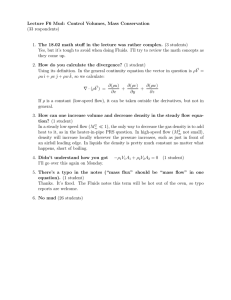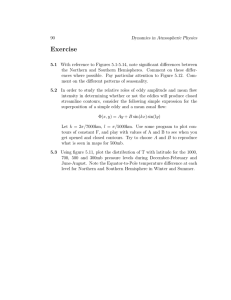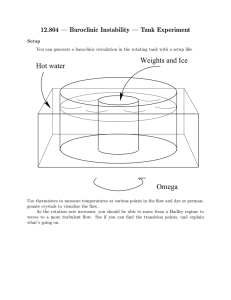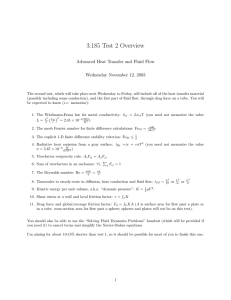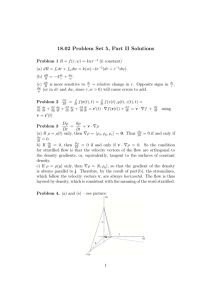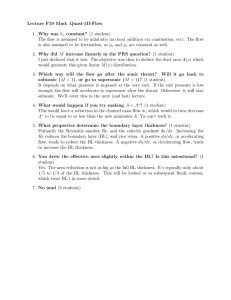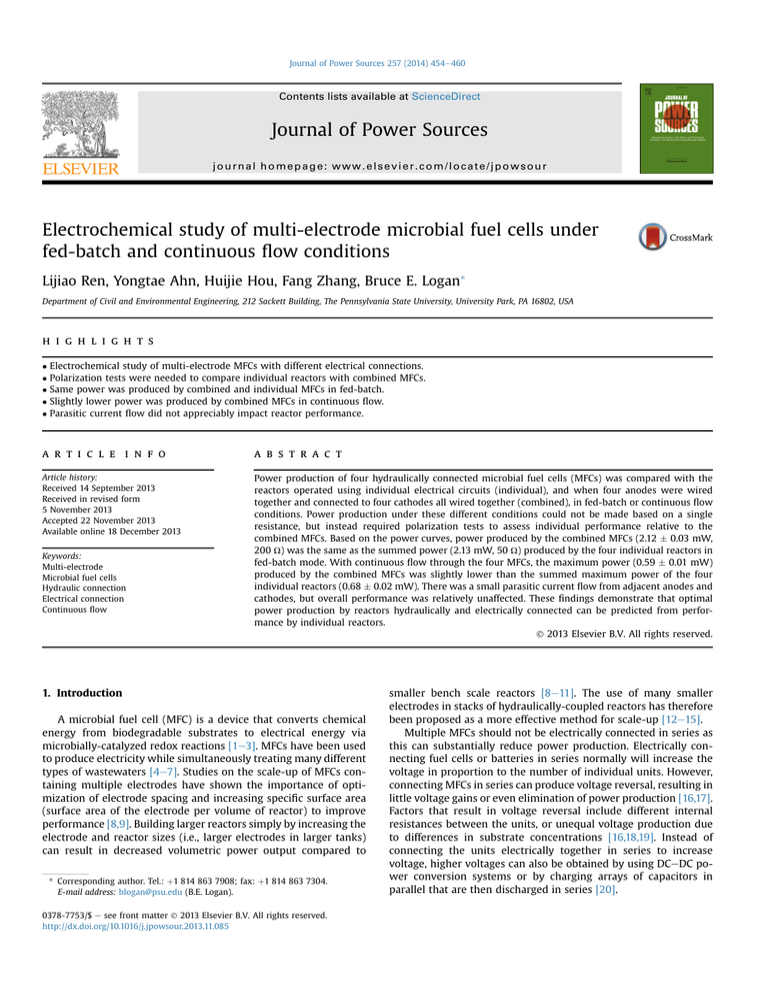
Journal of Power Sources 257 (2014) 454e460
Contents lists available at ScienceDirect
Journal of Power Sources
journal homepage: www.elsevier.com/locate/jpowsour
Electrochemical study of multi-electrode microbial fuel cells under
fed-batch and continuous flow conditions
Lijiao Ren, Yongtae Ahn, Huijie Hou, Fang Zhang, Bruce E. Logan*
Department of Civil and Environmental Engineering, 212 Sackett Building, The Pennsylvania State University, University Park, PA 16802, USA
h i g h l i g h t s
Electrochemical study of multi-electrode MFCs with different electrical connections.
Polarization tests were needed to compare individual reactors with combined MFCs.
Same power was produced by combined and individual MFCs in fed-batch.
Slightly lower power was produced by combined MFCs in continuous flow.
Parasitic current flow did not appreciably impact reactor performance.
a r t i c l e i n f o
a b s t r a c t
Article history:
Received 14 September 2013
Received in revised form
5 November 2013
Accepted 22 November 2013
Available online 18 December 2013
Power production of four hydraulically connected microbial fuel cells (MFCs) was compared with the
reactors operated using individual electrical circuits (individual), and when four anodes were wired
together and connected to four cathodes all wired together (combined), in fed-batch or continuous flow
conditions. Power production under these different conditions could not be made based on a single
resistance, but instead required polarization tests to assess individual performance relative to the
combined MFCs. Based on the power curves, power produced by the combined MFCs (2.12 0.03 mW,
200 U) was the same as the summed power (2.13 mW, 50 U) produced by the four individual reactors in
fed-batch mode. With continuous flow through the four MFCs, the maximum power (0.59 0.01 mW)
produced by the combined MFCs was slightly lower than the summed maximum power of the four
individual reactors (0.68 0.02 mW). There was a small parasitic current flow from adjacent anodes and
cathodes, but overall performance was relatively unaffected. These findings demonstrate that optimal
power production by reactors hydraulically and electrically connected can be predicted from performance by individual reactors.
Ó 2013 Elsevier B.V. All rights reserved.
Keywords:
Multi-electrode
Microbial fuel cells
Hydraulic connection
Electrical connection
Continuous flow
1. Introduction
A microbial fuel cell (MFC) is a device that converts chemical
energy from biodegradable substrates to electrical energy via
microbially-catalyzed redox reactions [1e3]. MFCs have been used
to produce electricity while simultaneously treating many different
types of wastewaters [4e7]. Studies on the scale-up of MFCs containing multiple electrodes have shown the importance of optimization of electrode spacing and increasing specific surface area
(surface area of the electrode per volume of reactor) to improve
performance [8,9]. Building larger reactors simply by increasing the
electrode and reactor sizes (i.e., larger electrodes in larger tanks)
can result in decreased volumetric power output compared to
* Corresponding author. Tel.: þ1 814 863 7908; fax: þ1 814 863 7304.
E-mail address: blogan@psu.edu (B.E. Logan).
0378-7753/$ e see front matter Ó 2013 Elsevier B.V. All rights reserved.
http://dx.doi.org/10.1016/j.jpowsour.2013.11.085
smaller bench scale reactors [8e11]. The use of many smaller
electrodes in stacks of hydraulically-coupled reactors has therefore
been proposed as a more effective method for scale-up [12e15].
Multiple MFCs should not be electrically connected in series as
this can substantially reduce power production. Electrically connecting fuel cells or batteries in series normally will increase the
voltage in proportion to the number of individual units. However,
connecting MFCs in series can produce voltage reversal, resulting in
little voltage gains or even elimination of power production [16,17].
Factors that result in voltage reversal include different internal
resistances between the units, or unequal voltage production due
to differences in substrate concentrations [16,18,19]. Instead of
connecting the units electrically together in series to increase
voltage, higher voltages can also be obtained by using DCeDC power conversion systems or by charging arrays of capacitors in
parallel that are then discharged in series [20].
L. Ren et al. / Journal of Power Sources 257 (2014) 454e460
Practical applications of MFCs will require operation under
continuous flow conditions, but hydraulic flow through arrays of
MFCs can adversely affect power production and COD removal
relative to that expected from individual reactor performance
[14,21,22]. Wastewater can be processed through multiple MFCs in
one of two ways: sequentially through all reactors (hydraulically
connected in series) [12,23]; or divided up to flow through each
individual MFC (hydraulically in parallel) [17]. Series flow can
minimize the substrate concentration change in each reactor (i.e.,
difference between inlet and outlet concentration) and this
approach has been used in several studies [12,24,25]. Parallel flow
will produce similar conditions in all reactors [10,17], but a low
desired effluent COD concentration would result in a large substrate gradient in each MFC. This large change in COD, in a single
reactor with multiple anodes wired together, has been shown to
adversely affect power production [19]. The same phenomenon
occurs when multiple MFCs are wired together under conditions
where there is an ionic connection between the electrodes (i.e., the
electrodes of different units share the same fluid chamber) [22]. To
avoid ionic connections between adjacent electrodes, flow through
a series of MFCs was arranged in one study so that the water
cascaded (overflowed) from one MFC to another [13]. This separation of the MFCs avoided direct fluid connections, and thus severed solution ionic connections. Alternatively, ionic separation can
be achieved by using large constrictions in the flow path (creating
very high ionic resistances between adjacent cells), or the cells can
be widely separated [25,26]. The optimal condition is to have no
electrolyte connection between these reactors [18], but that would
not be possible in larger MFCs that contain multiple anodes or
cathodes as these electrodes all share the same electrolyte.
The aim of this study was to better understand the reasons why
power production decreases when multiple anodes are wired
together, under conditions where there are large substrate concentration changes. To study how substrate concentration changes
might affect power production in a multi-electrode reactor, we
hydraulically connected four MFCs in series to simulate the operation of single MFC containing multiple anodes and cathodes. The
electrical connections between the reactors were either set with
completely individual circuits between the paired anodes and
cathodes, or they were combined into a single circuit with all four
anodes wired together and connected to four cathodes all wired
together. Power production with this parallel electrical connection
was compared to the summed power produced by the individually
wired MFCs to determine how the electrical connections between
the electrodes affected performance. These comparisons with the
two different electrical connections were made using polarization
data for MFCs operated in either fed-batch mode or continuous
flow conditions with hydraulic flow in series through the four reactors. Continuous flow operation produced conditions that resulted in large substrate concentration changes across the multiple
electrodes, allowing examination to how substrate changes affect
overall performance. The individual potentials of the electrodes
were measured using reference electrodes and individual current
using resistances on the different anodes and cathodes, allowing a
more comprehensive characterization of the multi-electrode MFCs.
2. Materials and methods
455
between MFC reactors aligned side by side (Fig. 1). This hydraulic
connection of the individual cells enabled simulation of a single
multi-electrode system. The total liquid volume of the four connected MFC reactors was 58 mL. Anodes were non-waterproof
carbon cloth (#CCP40, Fuel Cell Earth, USA) with a projected surface area of 7 cm2. Air cathodes (7 cm2) made of waterproof carbon
cloth (30 wt.%, #CC640WP30, Fuel Cell Earth, USA) had a catalyst
loading of 0.5 mg-Pt/cm2 on the water side, and four PTFE diffusion
layers on the air side [27]. The electrode spacing was 2 cm (anode
surface to cathode surface). The distance between the main liquid
chambers of each MFC was 2 cm. A reference electrode (Ag/
AgCl; þ200 mV versus a standard hydrogen electrode (SHE); BASi)
was inserted into the middle of each of the four MFCs to determine
the anode and cathode potentials (Fig. 1b). Additional tests were
conducted with four MFCs connected hydraulically in series using
very thin needles (21 G 1, BDÔ sterile hypodermic needle, BD,
USA) to reduce ionic connections between the reactors.
A tracer test was conducted using abiotic reactors to determine
whether there was flow short circuiting. A KCl solution (1 mol L1)
was used as the conservative tracer, with an input of 1 h duration. The
tracer concentration at the outlet was measured using a conductivity
meter over a period of 34 h. The experimental data was modeled
using both dispersion model and CSTRs in series model [28].
2.2. Reactor operation
MFCs connected by individual circuits were compared to the
four MFCs wired together (combined circuit) under fed-batch mode
and continuous flow mode in terms of power production. For individual circuit connections, each MFC was connected through a
separate external resistor (see Supporting information, Scheme
S1a). For combined circuit connections, the four anodes were
wired together using copper wires and then connected through a
single external resistor to all the cathodes similarly wired together
with copper wires (Scheme S1b). The four MFCs with individual
electrical connections were designated as R1eR4 (duplicates R5e
R8). For combined electrical connection, the MFC was designated as
M1234 (duplicate M5678).
The MFCs were each initially acclimated using an individual
circuit connection with a 1000 U external resistor in fed-batch
mode, with the growth medium replaced when the voltage
decreased to <0.05 V. Polarization and power data were obtained
for both the individual connections and the combined connections
after the MFC reactors exhibited stable performance, defined as
reproducible voltage output over at least three consecutive cycles.
Following batch tests, the MFCs were switched to continuous flow
operation, with medium flowing sequentially through reactors 1e4
(Fig. 1b). The hydraulic retention time (HRT) was set at 12 h using a
flow rate of 0.08 mL min1. All the experiments were conducted in
duplicate in a temperature controlled room at 30 C.
The medium contained (per liter): 0.5 g CH3COONa, 10 mL vitamins, and 10 mL minerals [12,20] in a 50 mM PBS buffer (0.31 g
NH4Cl, 2.45 g NaH2PO4$H2O, 0.13 g KCl, 4.58 g Na2HPO4;
pH ¼ 7.1 0.2, conductivity g ¼ 7.6 0.2 mS cm1). The medium
was autoclaved and then placed in an ice bucket during tests to
avoid degradation prior to being fed into the reactors in continuous
flow tests. The fluid warmed during transfer into the MFC, avoiding
temperature differences between tests.
2.1. Reactor construction
2.3. Chemical and electrochemical analysis
Single-chamber, air-cathode MFCs were made of cube-shaped
Lexan blocks, each having a single cylindrical chamber with a volume of 14 mL (7 cm2 cross sectional area) as previously described
[7]. Windows (20 mm length 6 mm width) were cut in the center
on the left and right sides of the block to allow hydraulic flow
Soluble chemical oxygen demand (sCOD) was measured using
standard methods (method 5220, HACH COD system, HACH
Company, Loveland, CO) [29]. All samples for sCOD measurement
were filtered through 0.45 mm pore diameter syringe filters
456
L. Ren et al. / Journal of Power Sources 257 (2014) 454e460
Fig. 1. Configuration of the four hydraulically connected MFCs: (a) photo showing the outside structure and (b) schematic drawing showing the hydraulic connection.
(polyvinylidene difluoride, PVDF, 25 mm size, Restek Corporation,
USA). Conductivity and pH were measured using a probe (SevenMulti, Mettler-Toledo International Inc.).
Voltage was recorded using a multimeter (model 2700; Keithley
Instruments, Inc.) at 20 min intervals, with the power calculated as
P ¼ IU, and the current calculated using Ohm’s law (I ¼ UR1),
where U is the measured voltage (V), and R the external resistance
(U) [30]. For fed-batch tests, polarization data were obtained using
the multiple-cycle method (two cycles each) by changing the
external resistances from 4000 to 1000, 500, 200, 120, 80 and 40 U
(individual connections), or from 1000 to 250, 125, 40, 30, 20 and
10 U (combined connections). In continuous flow tests, the external
resistances were changed from 4000 to 2000, 1000, 500, and 300 U
(individual connections), or from 1000 to 500, 250, 125, and 75 U
(combined connections), with a single resistor used for a minimum
of two days. All electrode potentials were reported versus the Ag/
AgCl reference electrode. Potential gradients in the electrolyte
phase were measured as potential differences between the reference electrodes in the four different MFCs. In some combined
electrical connection experiments, an additional 10 U resistor was
introduced in series with each anode and cathode in order to
measure the current of each individual electrode.
The power produced by the individual MFCs under continuous
flow conditions relative to each other was quite different from that
obtained in fed-batch tests, due to differences in substrate concentrations among the reactors. The power produced by the MFCs
3. Results
3.1. Power production
In fed-batch mode, the performance of the individual MFCs
(R1eR4) relative to each other was the same, based on power
curves obtained from reactors after being fed with fresh medium,
with a maximum power of 0.53 0.03 mW at a current of
1.63 0.01 mA (200 U) (Fig. 2a). The average power curve for the
four reactors was therefore produced by averaging the current and
power of the four individual MFCs at each external resistance (i.e.,
the average). The maximum power that could be obtained from the
four MFC reactors based on summation of the power of the individual reactors (2.12 0.03 mW, 6.53 0.04 mA, 200 U) was the
same as that obtained with all electrodes wired together (2.13 mW,
6.51 mA, 50 U, M1234, Fig. 2b).
Fig. 2. Power production of the MFC reactors in fed-batch mode. (a) Individual
connection showing the identical performance of the four MFC reactors (R1eR4). (b)
Combined connection where the summed power of the four individual reactors
(4 average) compared to that of the combined reactor (M1234). Results are shown for
two separate sets of reactors (1e4, and duplicates 5e8 in Fig. S2).
L. Ren et al. / Journal of Power Sources 257 (2014) 454e460
decreased from inlet to outlet, with a maximum power for the
individually-wired MFCs of 0.23 mW (1000 U, R1), 0.20 mW
(1000 U, R2), 0.16 mW (2000 U, R3), and 0.10 mW (4000 U, R4)
(Fig. 3a). The sCOD concentrations measured in the direction of
flow decreased from the inlet concentration of 363 mg L1, to outlet
concentrations of 253 mg L1 (R1), 168 mg L1 (R2), 112 mg L1
(R3), and 86 L1 (R4) (1000 U external resistance for each MFC). The
reduction in power due to the lower substrate concentration was
expected based on previous studies using individual reactors
[23,31]. Tracer tests showed that the calculated HRTs using both
models (16.5 h for CSTRs in series model and 15.2 h for dispersion
model) were slightly larger than the theoretical value of 12 h
(Fig. S2), indicating there was no flow short circuiting in the reactors. This lack of short circuiting is also supported by the large
changes in COD along the direction of flow.
Under continuous flow condition, a comparison was made between the summed maximum power produced by the four individual MFCs and that of the combined MFCs with the electrodes
wired together, as no averaged power curve could be calculated due
to the different performance of the individual reactors. The
maximum power produced by each individually-wired MFC was
summed as 0.68 0.02 mW (the average of the maximum power
densities of R1eR4, and those for R5eR8). This was slightly higher
(15%) than the maximum power produced by the combined MFCs
with the electrodes wired together (0.59 0.01 mW, averaged for
M1234 and M5678) at an external resistance of 500 U (Fig. 3b).
Additional tests conducted using reactors connected hydraulically
with needles to break the ionic connections between the reactors
also showed similar reactor performance between the individual
Fig. 3. Power production of the MFC reactors operated in continuous flow with the
flow from R1 to R4. (a) Individual connection showing the different performance of the
four MFC reactors (R1eR4). (b) Combined connection (M1234). Results are shown for
two separate sets of reactors (1e4, and duplicates 5e8 in Fig. S3).
457
circuit connections and the combined circuit connections as that of
the MFCs hydraulically connected by windows, even under
continuous flow conditions. The summed maximum power produced by the individual MFCs in these tests was 0.64 0.01 mW,
also slightly higher than that produced by the combined MFCs
(0.59 0.01 mW, 500 U) (Fig. 4). The maximum power in continuous flow was lower than that obtained in fed-batch tests
(2.13 0.03 mW) due to the lower substrate concentrations in the
MFCs at steady state under continuous flow conditions, compared
to that present in the reactors at the start of the fed-batch test [12].
3.2. Effect of external resistance
The external resistances used for comparison of the combined
system with the individual MFCs are particularly important for
comparisons of power production. When the anodes and cathodes of
multiple MFCs were electrically connected together to form a single
anode and cathode connection, it was determined that the external
resistance had to be reduced compared to that used for individual
connections in order to obtain the maximum power. In fed-batch
operation, the four combined MFCs produced their maximum power at 50 U, compared to 200 U needed for the MFCs with separately
wired anodes and cathodes (Fig. 2). Similarly, the maximum power
produced by the combined MFCs under continuous flow conditions
was obtained at an external resistance of 500 U, compared to those
(1000 U, 2000 U and 4000 U) for the individual MFCs (Fig. 3).
These results on the maximum power at different resistances
suggested that polarization and power curves should be conducted
to compare the combined electrode system with the individual
MFCs, instead of measuring the power production under a single
resistance. For example, when a 2000 U resistance was used for the
four MFC reactors electrically combined in one circuit, the power
was 0.24 0.01 mW, compared to 0.65 0.04 mW obtained by
summation of the power produced by the four individual reactors
at 2000 U (Fig. 5). However, when the resistance was decreased to
500 U, the power produced by the four combined MFCs increased
to 0.64 0.01 mW (Fig. 5). Additional examples at different
external resistances in both fed-batch operation and continuous
flow were provided in Supporting Information (Figs. S6 and S7).
The reduced external resistance used for the combined MFCs to
achieve comparable power to that produced through summation of
power of the individual MFCs, indicated a decrease in internal
resistance for the combined MFCs. Theoretically, for n batteries
with same electromotive force (Emf) and internal resistance, an
external resistance used for the combined circuit to obtain the same
power production to the summation of individual circuits should be
1/n, compared to that used in the individually-wired electrode,
where n is the number of electrodes combined together. This rule
can be applied for the multi-electrode MFCs operated in the fedbatch operation, because four reactors had the same performance. However, in continuous flow tests the four MFCs had
different internal resistances (Fig. 3a) due to the large substrate
gradient in the direction of flow. When the four MFCs were combined to form one circuit, the apparent internal resistance also
decreased, but the value was dependent on the individual Emfs and
internal resistances. Future studies on the systematic analysis of the
internal resistances of the individual MFCs and the combined MFCs,
either by impedance tests or modeling, would be interesting and
helpful for a better understanding of changes in reactor performance in multi-electrode systems.
3.3. Current profiles for combined electrodes
When multiple anodes or cathodes are connected together,
parasitic current could affect the performance of an adjacent
458
L. Ren et al. / Journal of Power Sources 257 (2014) 454e460
Fig. 4. Power production of the MFC reactors hydraulically connected using needles in
continuous flow with the flow from R1 to R4. (a) Individual connection showing the
different performance of the four MFC reactors (R1eR4). (b) Combined connection
(M1234). Results are shown for two separate sets of reactors (1e4, and duplicates 5e8
in Fig. S5).
electrode. This parasitic current could arise from differences in
potentials between adjacent electrodes that were produced, for
example, by differing substrate concentrations among the electrodes. In continuous flow tests, the sCOD concentration was
reduced during flow from R1 to R4. Thus, the anode potentials in
the direction of flow increased from 0.39 0.01 V (R1) to
0.32 0.02 V (R2), 0.23 0.02 V (R3), and 0.15 0.01 V (R4)
(results using a 125 U external resistance). Based on measurements
of voltages from each anode and cathode (obtained using a small
10 U resistor in each electrical connection to monitor current), the
R4 anode (R4A) produced very little current (0.014 mA), compared
to the current flowing into the opposing R4 cathode (0.18 mA, R4C)
(Fig. 6). This imbalanced current flow between the opposing electrodes indicated that there was an ionic current from the anode of
the adjacent MFC (R3A) to the opposing cathode (R4C). Similarly,
there was also ionic current from the R2 anode (R2A) to the R3
cathode (R3C) as indicated by an unbalanced current between R3A
(0.24 mA) and R3C (0.37 mA). The parasitic current flow here was
primarily due to the poor performance of the last anode (R4A), as it
had very little current production likely due to the low effluent
substrate concentration. As a result of the parasitic current flow,
more current was produced by R2A (1.09 mA) and R1A (1.25 mA)
than those by their opposing cathodes (R2C, 0.90 mA; R1C,
1.18 mA). As a result of this improved anode current flow
compensating for the reduced anode current flow, overall reactor
performance was not significantly affected.
The effect of low current generation by an anode was further
examined by disconnecting anodes (R1 and R3) under nonsubstrate limiting conditions (1 g L1 sodium acetate) in continuous flow tests (300 U external resistance). The four cathodes were
always wired together during these tests, while either four working
anodes or only two working anodes (R2 and R4) were wired
together and connected to the cathodes. When one anode was
connected to two cathodes (one opposed, and one adjacent) the
current was 1.18 0.01 mA (0.81 0.02 mA by the opposed
cathode and 0.37 0.01 mA by the adjacent cathode). This current
was slightly higher than obtained by the same anode with a
working adjacent anode which produced 1.08 0.01 mA. Parasitic
current was also observed from the current producing anodes (R2A
and R4A) to the adjacent cathodes (R1C and R3C) opposing the
anodes with no current production, resulting in higher anode
current production.
4. Discussion
These experiments with multiple reactors connected electrically
in different ways revealed two important aspects of MFC operation.
First, the performance of an electrode could not be properly
assessed without conducting polarization tests on each individual
Fig. 5. Power output of the MFC reactors at individual connection (R1eR4, 2000 U
external resistance) and combined connection (M1234, 2000 U and 500 U external
resistance) in continuous flow. Results are shown for two separate sets of reactors (1e
4, and duplicates 5e8 in Fig. S7b).
Fig. 6. Current output of the anodes and cathodes at combined connection (M1234,
125 U external resistance) in continuous flow. Results are shown for two separate sets
of reactors (1e4, and duplicates 5e8 in Fig. S8).
L. Ren et al. / Journal of Power Sources 257 (2014) 454e460
electrode. If only a single resistance was used for testing the power
produced by the whole reactor or an individual electrode, the
performance of that individual electrode connected separately
from other electrodes would appear to be much better than it was
when connected with other electrodes. This result was due to the
different electrical loads on that electrode when the same resistance was applied for each individual electrode versus the combined electrodes from multiple reactors. Comparisons of power
curves for individual versus combined electrodes here indicated
that the resistance used for the combined MFCs should be lower
than that used for the individual reactors to achieve comparable
power production due to a decrease in internal resistance when the
anodes and cathodes were connected electrically in parallel (Section 3.2). Previously it was reported that anode performance was
reduced when all anodes were connected together in a reactor
containing a single cathode [19]. However, this comparison was
based on using the same external resistance (1000 U) for the individual electrodes and the combined electrodes. Our results here
suggest that the resistor used for the combined anodes should have
been much lower than the 1000 U used for the individual anodes.
The best way to compare individual electrode performance is
therefore to conduct polarization tests on each individual anode. It
was shown here that a power curve based on the summed power
produced by the four individual reactors was essentially identical to
that of the MFC with the four anodes wired tougher and the four
cathodes wired together in fed-batch operation (Fig. 2b). While in
continuous flow, the summed maximum power from the power
curves of the four individual MFCs was slightly higher (15%) than
that from the power curve of the combined MFC (Fig. 3).
A second important finding was that the substrate concentration differences at the anodes, produced under continuous flow
conditions, had more of an effect on the performance of multiple
reactor systems than parasitic current between the electrodes. In
continuous flow operation, the four individual MFCs can have
different Emfs and internal resistances at the substrate concentration where they achieved their maximum power. A loss in
maximum power could result when MFCs with different Emfs and
internal resistances are combined into a single circuit because of
the differences in these systems. Therefore, there is no single
external load that could be chosen that would allow all the individual reactors to produce their maximum power.
Parasitic current flow between adjacent electrodes, determined
from individual electrode measurements and by disconnecting
electrodes, did not appreciably affect the overall performance of the
multi-electrode MFC, although it did alter the current produced by
the individual electrodes. The anode near the exit of the flow from
the MFC (R4) produced very little current when wired to other
anodes. However, while the R4 anode (R4A) generated little current, the adjacent anode (R3A) generated a higher current as a
result of an ionic flux supported by both its opposing cathode (R3C)
and the adjacent cathode (R4C). This resulted in greater current
generation by R3A than would be possible in the absence of R4C, as
further shown in tests comparing performance of anodes with and
without the adjacent anode electrically connected to the circuit. As
a result of this improved anode current flow compensating for the
reduced anode current flow, overall reactor performance was not
affected. However, large changes in the flow rate through the
reactor, such as very long HRTs, could further alter anode potentials.
The effect of HRT on performance was not examined here.
Research by others suggested that completely separating reactors, so that there was no fluid connections between them, might
further improve power production compared to the case here with
all electrodes exposed to the same fluid [13,17,18]. However, additional tests using reactors connected hydraulically by very thin
needles showed the same performance as those connected by
459
windows, in terms of power production for different electrode
connections (Figs. 3 and 4), although a very large solution resistance created by the needle bridge had reduced the parasitic current to a level below the detection limit (<103 mA). This further
suggested that parasitic current would not affect MFC performance
when the electrodes sharing the same electrolyte were wired
together, and thus completely separating reactors might not
improve power production.
5. Conclusions
The best way to compare the performance between the combined MFCs and the individual reactors is to conduct polarization
tests. Changes in substrate concentration with flow through the
reactors can result in differences in internal resistance among the
reactors, which can preclude accurate comparison based on a single
external resistance. When compared on the basis of polarization
data, the MFCs with the electrodes wired together showed no differences in power production from that obtained by summing power from the individually wired reactors in fed-batch operation.
Even in continuous flow conditions, where the substrate concentration significantly affected the anode potentials and MFC performance, the maximum power of the combined MFC was only
slightly lower than that summed of the four individual reactors.
Parasitic current flow measured for MFCs hydraulically connected
in series and electrically in parallel showed, no appreciable impact
on reactor performance, and thus there was no need for electrolyte
isolation between adjacent reactors under such flow conditions.
Acknowledgments
The authors thank David Jones for help with the analytical
measurements. This research is supported by Award KUS-I1-00313 from the King Abdullah University of Science and Technology
(KAUST).
Appendix A. Supplementary data
Supplementary data related to this article can be found at http://
dx.doi.org/10.1016/j.jpowsour.2013.11.085.
References
[1] B.E. Logan, B. Hamelers, R.A. Rozendal, U. Schrorder, J. Keller, S. Freguia,
P. Aelterman, W. Verstraete, K. Rabaey, Environ. Sci. Technol. 40 (2006)
5181e5192.
[2] Z.W. Du, H.R. Li, T.Y. Gu, Biotechnol. Adv. 25 (2007) 464e482.
[3] S.T. Oh, J.R. Kim, G.C. Premier, T.H. Lee, C. Kim, W.T. Sloan, Biotechnol. Adv. 28
(2010) 871e881.
[4] T.H. Pham, P. Aelterman, W. Verstraete, Trends Biotechnol. 27 (2009)
168e178.
[5] B.E. Logan, Nat. Rev. Microbiol. 7 (2009) 375e381.
[6] B. Erable, L. Etcheverry, A. Bergel, Biofouling 27 (2011) 319e326.
[7] H. Liu, B.E. Logan, Environ. Sci. Technol. 38 (2004) 4040e4046.
[8] H. Liu, S. Cheng, L.P. Huang, B.E. Logan, J. Power Sources 179 (2008) 274e279.
[9] Z.L. Li, L. Yao, L.C. Kong, H. Liu, Bioresour. Technol. 99 (2008) 1650e1655.
[10] I. Ieropoulos, J. Greenman, C. Melhuish, Int. J. Energy Res. 32 (2008)
1228e1240.
[11] G.K. Rader, B.E. Logan, Int. J. Hydrogen Energy 35 (2010) 8848e8854.
[12] Y. Ahn, B.E. Logan, Appl. Microbiol. Biotechnol. 93 (2012) 2241e2248.
[13] P. Ledezma, J. Greenman, I. Ieropoulos, Bioresour. Technol. 134 (2013)
158e165.
[14] J. Winfield, I. Ieropoulos, J. Greenman, J. Dennis, Bioprocess Biosyst. Eng. 34
(2011) 477e484.
[15] A. Galvez, J. Greenman, I. Ieropoulos, Bioresour. Technol. 100 (2009)
5085e5091.
[16] S.E. Oh, B.E. Logan, J. Power Sources 167 (2007) 11e17.
[17] P. Aelterman, K. Rabaey, H.T. Pham, N. Boon, W. Verstraete, Environ. Sci.
Technol. 40 (2006) 3388e3394.
[18] D. Kim, J. An, B. Kim, J.K. Jang, B.H. Kim, I.S. Chang, ChemSusChem 5 (2012)
1086e1091.
460
L. Ren et al. / Journal of Power Sources 257 (2014) 454e460
[19] Y. Ahn, B.E. Logan, Appl. Microbiol. Biotechnol. 97 (2013) 409e416.
[20] Y. Kim, M.C. Hatzell, A.J. Hutchinson, B.E. Logan, Environ. Sci. Technol. 4 (2011)
4662e4667.
[21] R.P. Pinto, B. Tartakovsky, M. Perrier, B. Srinivasan, Ind. Eng. Chem. Res. 49
(2010) 9222e9229.
[22] L. Zhuang, Y. Zheng, S.G. Zhou, Y. Yuan, H.R. Yuan, Y. Chen, Bioresour. Technol.
106 (2012) 82e88.
[23] B. Wang, J.I. Han, Biotechnol. Lett. 31 (2009) 387e393.
[24] V. Fedorovich, S.D. Varfolomeev, A. Sizov, I. Goryanin, Water Sci. Technol. 60
(2009) 347e355.
[25] L. Zhuang, S.G. Zhou, Electrochem. Commun. 11 (2009) 937e940.
[26] R. O’Hayre, T. Fabian, S.J. Lee, F.B. Prinz, J. Electrochem. Soc. 150 (2003) A430eA438.
[27] S. Cheng, H. Liu, B.E. Logan, Electrochem. Commun. 8 (2006) 489e494.
[28] K.J. Howe, D.W. Hand, J.C. Crittenden, R.R. Trussell, G. Tchobanoglous, Principles of Water Treatment, third ed., John Wiley&Sons, Inc., Hoboken, NJ,
2012.
[29] APHA, in: L.S. Clesceri, A.E. Greenberg, A.D. Eaton (Eds.), American Public
Health Association, American Water Works Association, Water Environment
Federation, Washington DC, 1998.
[30] Y.Y. Hong, D.F. Call, C.M. Werner, B.E. Logan, Biosens. Bioelectron. 28 (2011)
71e76.
[31] H. Liu, S.A. Cheng, B.E. Logan, Environ. Sci. Technol. 39 (2005) 658e662.


